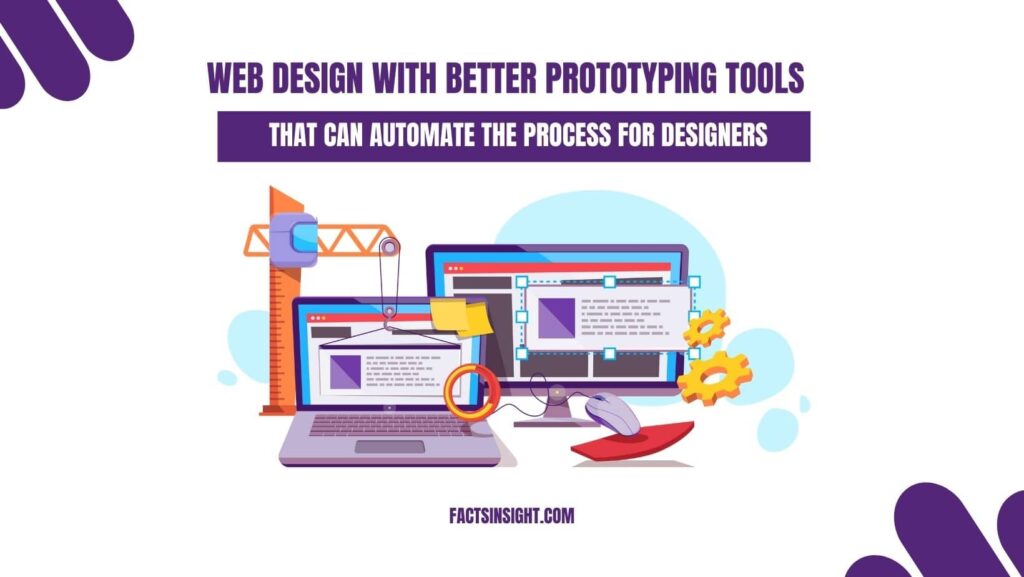
The world of web design is constantly changing and demands efficiency and innovation.
Designers seek to speed up workflows and provide great user experiences in today’s fast-paced digital environment.
Using sophisticated prototyping technologies that automate certain activities and free users to concentrate on creativity and problem-solving is a crucial element that can considerably improve the design process.
Manual prototyping is frequently used in traditional approaches to web design, which can be time-consuming and impede iterative design revisions.
But, introducing cutting-edge prototyping tools has revolutionized the field and given users access to automated tools.
In this article, we explore how incorporating better prototyping tools into the web design workflow can revolutionize the way a web designer Dubai works.
The Importance Of Prototyping In Web Design
Prototyping is crucial in web design, allowing people to create interactive and functional representations of their concepts.
Before moving on to the development stage, a Dubai web designer can test usability, receive user input, and perfect their concepts by prototyping.
Traditionally, prototyping required the labor- and time-intensive process of manually creating static or clickable prototypes.
Advanced tools have enabled users to automate many process components, which has enhanced efficiency and improved design outcomes.
Let’s discuss how they empower designers to streamline their processes, enhance collaboration, and deliver exceptional web experiences to users.
Automating Design Elements and Interactions
These tools provide the ability to automate design elements and interactions.
Website designers may drag and drop pre-designed elements, like buttons, menus, and forms, onto the canvas using the tools’ user-friendly interface.
They may also quickly develop interactive prototypes without considerable coding skills using predefined styles and activities.
Moreover, faster iterations and a more effective design process are the results of this automation, which frees people to concentrate more on the creative aspects of their work.
Dynamic Data and Content Generation
Creating dynamic data and content has also seen considerable breakthroughs thanks to prototype tools.
Web designers used to manually enter sample data into their prototypes, which was time-consuming and prone to mistakes.
Furthermore, modern prototyping systems have features that let people automatically create accurate data, like names, addresses, and photographs.
This automation also saves time and ensures that the prototypes accurately represent real-world scenarios, enabling designers to make informed design decisions.
Collaboration and Feedback Integration
Collaboration and feedback are essential components of the design process, and prototyping tools have become increasingly efficient in facilitating these aspects.
Modern technologies provide cloud-based collaboration features that let Dubai freelance web designers collaborate on the same prototype in real-time.
Additionally, these tools frequently connect to project management systems, making it simpler for teams to communicate, offer input, and monitor design iterations.
Users may also enhance communication, lessen misunderstandings, and ultimately produce better designs by automating the processes of collaboration and feedback.
Testing and Validation
Testing and validation are critical to ensure the usability and effectiveness of a design.
Advanced prototyping tools now offer built-in testing capabilities, allowing designers to conduct user testing directly within the prototypes.
They may also learn important information about how people engage with their designs using tools like heat maps, click tracking, and user recordings.
In addition, they can now make data-driven decisions thanks to these automated testing features.
Early design optimization allows for more effective and user-friendly websites by incorporating testing and validation into the prototyping phase.
Responsive Design Adaptation
Responsive design is essential in today’s mobile-driven world, where websites must adapt seamlessly to different screen sizes and devices.
Such tools offer features that automatically adjust the design elements based on various breakpoints.
A web designer Dubai can define breakpoints for different screen sizes and preview how the design responds in real time.
This automation also eliminates the need for manual resizing and allows them to focus on optimizing the user experience across different devices.
These tools enhance efficiency and ensure the final website delivers a consistent and engaging experience.
Code Generation and Handoff
Moving from design to development after the prototyping stage can occasionally be difficult.
By automating the processes of code generation and handoff, advanced prototyping tools address this problem.
These tools may produce clean HTML, CSS, and even JavaScript code by examining the design components and interactions in the prototype.
In addition to saving time, this automation ensures that the design is faithfully converted into code.
Prototyping solutions also frequently offer functions that let developers directly examine and extract design assets—like images and icons—from the prototypes.
The collaboration between designers and developers is enhanced by this simplified handoff procedure, which also lowers the possibility of misunderstanding and, eventually, results in more efficient development cycles.
Integration with Design Systems
Design systems have become increasingly popular as they provide a centralized library of reusable components, styles, and guidelines.
These tools offer seamless integration with design systems, allowing a web designer Dubai to leverage pre-existing components and maintain design consistency across projects.
They ensure that designers can easily access the latest design assets and quickly assemble and customize their prototypes.
Hence, this integration also promotes efficient collaboration within design teams and facilitates the scalability and reusability of design assets.
Interactive Animation and Micro-interactions
Adding dynamic animations and micro-interactions can considerably improve a website’s user experience and appearance.
Automation elements make creating and incorporating animations and micro-interactions into prototypes easier.
Website designers may also quickly apply predetermined motion effects and transitions to canvas components using the libraries these tools frequently offer.
They can make their animations by specifying the prototyping tool’s timelines, triggers, and easing functions.
Besides, they can swiftly prototype and iterate on interactive components like hover effects, scroll animations, and button interactions.
They may also create engaging web experiences that attract users and strengthen a brand’s identity by combining interactive animations and micro-interactions through prototype tools.
Wrapping Up!
The development of these tools has changed the online design process by automating several steps in the design process. Embracing these automation features allows a web designer Dubai to streamline their workflows, save time and effort, and produce high-quality designs that are responsive, code-ready, and consistent across different devices and platforms. As the field of web design continues to evolve, users should embrace the power of advanced prototyping tools to stay ahead of the curve and deliver outstanding web experiences.

Factsinsight.com is a leading blog that focuses on creating high quality, interesting and useful content about technology. We are a group of experienced writers who know a lot about the world of tech and love to stay abreast of the latest trends and developments. Our aim is to give useful and real knowledge to our people.
